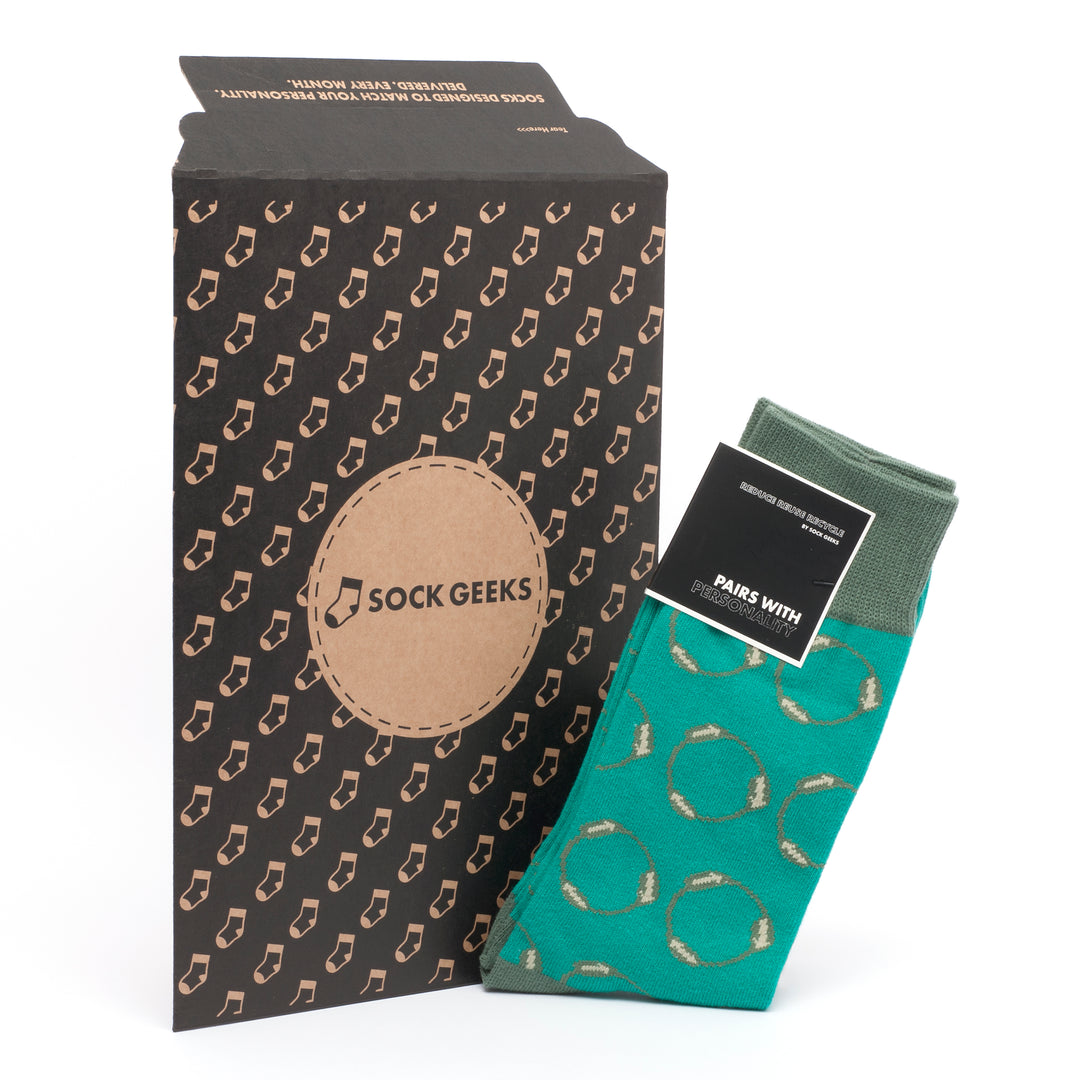How Often Should I Wash My Socks? Mastering Laundry Frequency
Are you curious about the optimal sock-washing routine? The debate between frequent washes and occasional wears may leave you puzzled. Fear not! In this guide, we delve into the contrasting views on how often you should clean your socks to maintain good hygiene and prevent smells.
Some swear by daily washing for hygiene, while others advocate for a more relaxed approach to preserve fabric quality. Stay tuned as we uncover the best practices and considerations for keeping your socks, underwear, and feet fresh and durable using products. Whether you're a laundry enthusiast or a laid-back dresser, finding the right balance is key to sock longevity and comfort.
Understanding Laundry Frequency
Clothing Items
Socks, being in close contact with our feet, should ideally be washed after each wear to prevent odours and bacteria build up and use a mesh bag in the washing machine. Underwear also falls into the category of items that should be washed after every use for hygiene reasons.
Tops like t-shirts and blouses can typically be worn a few times before needing a wash, depending on factors like sweating and odour. Jeans are known for their durability and can go several wears without washing, helping to preserve their colour and shape.
Importance of Hygiene
Maintaining a regular laundry routine is crucial for good hygiene. Regular washing helps to remove sweat, dirt, and bacteria from clothes, preventing skin irritation and bad smells. It also extends the lifespan of your garments by keeping them clean and fresh.
Balancing Act
It's essential to find a balance between over-washing and under-washing clothes. Over-washing can lead to faster wear and tear of fabrics, fading colours, and losing garment shape. On the other hand, under-washing can result in odours, stains setting in, and potential skin issues due to bacteria build-up.
Decoding Sock Washing Rituals
Optimal Frequency
Regularly washing socks is crucial to maintain hygiene. Depending on usage, aim for washing socks after every wear.
Socks worn during physical activities or in hot climates may require more frequent washing, while those worn indoors can be washed less often.
Impact on Foot Health
Neglecting sock hygiene can lead to odour-causing bacteria build up, potentially causing foot infections and fungal growth.
Washing socks frequently helps eliminate bacteria and fungi, reducing the risk of foot ailments and maintaining foot health.
Relationship with Hygiene
Clean socks are essential for overall hygiene as they prevent the spread of germs and maintain a healthy environment for your feet.
Ensure to wash socks at a high temperature, preferably above 60°C, to effectively kill bacteria and germs.
Daily Wear and Washing Needs
Signs to Watch Out For
Daily wear items like socks, underwear, and other garments come into direct contact with our skin and absorb sweat. When these clothes start to feel damp or emit an odour, it's time to consider washing them to eliminate the order. Fabrics that trap moisture can breed bacteria, leading to potential skin issues.
Washing Frequency Guidelines
For most daily wear items, such as socks and underwear, washing them after each use is advisable due to the direct contact with the body. This practice helps maintain hygiene levels and prevents the accumulation of bacteria. However, some materials, like wool, may not require frequent washing as they are naturally odour-resistant.
Establishing a Routine
To ensure your daily wear items stay fresh and clean, create a routine based on your lifestyle and activities. If you engage in physical work or exercise frequently, washing your clothes more often is essential. Consider local customs and personal preferences when deciding how many times a week to launder your garments.
Differentiating Between Items
When it comes to deciding how often to wash different daily wear items, consider their usage frequency. Socks worn for a single day may not need immediate washing if they don't show signs of dirt or odour. However, undergarments should be washed after each use for optimal hygiene.
The Importance of Handwashing
While most daily wear items can be machine-washed, delicate fabrics or products with specific care instructions may require handwashing. Handwashing allows for gentler cleaning and helps preserve the quality of the garment over time. It's crucial to follow the recommended guidelines on the product label for best results.
Combatting Odours and Infections
Preventing Odours
Maintaining good hygiene by washing socks regularly is crucial to prevent unpleasant odours. Sweat and bacteria accumulate in unwashed socks, leading to a foul smell.
To combat odours effectively, wash socks after each wear using warm water and detergent. Ensure thorough drying to prevent bacterial growth.
Understanding Infections
Wearing dirty socks can expose your feet to harmful fungi and bacteria, increasing the risk of infections. Fungal infections like athlete's foot thrive in moist environments.
Regularly washing and changing socks can help prevent fungal growth and maintain foot health. Opt for breathable fabrics to reduce moisture accumulation.
Impact on Foot Health
Dirty socks can cause various foot issues, including fungal infections and blisters. Bacteria from unwashed socks can lead to skin irritation and discomfort.
Proper washing routines are essential to eliminate bacteria and fungi that cause infections. Avoid wearing damp socks as they create an ideal environment for microbial growth.
Benefits of Proper Washing
Regularly washing socks not only prevents odours but also promotes overall foot health. Clean socks reduce the risk of fungal infections and maintain skin integrity.
Sock Care and Maintenance Tips
Washing Frequency
To maintain optimal hygiene, it is recommended to wash your socks after each wear. This helps remove sweat, bacteria, and odours, ensuring freshness.
Washing Techniques
When washing your socks, separate them from other garments to prevent lint transfer. Use mild detergent and cold water to preserve their elasticity and colour.
Drying Methods
Avoid using a dryer as high heat can damage the fabric and elastic fibres of the socks. Instead, air dry them by laying flat or hanging to maintain their shape.
Storage Solutions
Store your socks in a cool, dry place away from direct sunlight to prevent discolouration. Consider using drawer dividers to keep pairs together and maintain organisation.
Quality Check
Regularly inspect your socks for signs of wear and tear such as holes, thinning fabric, or stretched-out elastic. Replace any damaged socks promptly to avoid discomfort.
Choosing the Right Detergent
Selecting Detergents
When washing socks, it is crucial to choose the right detergent based on the fabric type. Different fabrics require specific cleaning agents to maintain their quality and durability.
Types of Detergents
- Liquid Detergents: Ideal for everyday socks made from cotton or synthetic blends. They effectively clean without leaving residue.
- Powdered Detergents: Suitable for heavy-duty socks like wool or thick hiking socks. They provide a deep clean and help remove tough stains.
Reading Labels
To ensure you are using the correct detergent for your socks, check the labels carefully. Look for phrases like "gentle formula" for delicate fabrics and "stain-fighting power" for tougher materials.
Compatibility Check
Before starting the wash cycle, perform a quick compatibility test by applying a small amount of detergent on an inconspicuous area of the sock. This helps prevent any damage or discolouration.
Environmental Impact
Consider opting for eco-friendly detergents that are biodegradable and free from harsh chemicals. These detergents are gentle on both your socks and the environment.
Storing Detergents
To maintain the effectiveness of your chosen detergent, store it in a cool, dry place away from direct sunlight. Proper storage ensures that the detergent retains its cleaning properties.
Mastering Washing Techniques
Gentle Washing Cycles
To maintain the quality of your socks, opt for gentle washing cycles on your machine. These cycles are designed to be softer on fabrics, preventing unnecessary wear and tear. Gentle washing cycles also help retain the shape and elasticity of your socks over time.
When using a gentle cycle, ensure you select a mild detergent suitable for delicate fabrics. Avoid harsh chemicals that can damage the fibres of your socks, leading to premature wear and tear. By choosing a gentle washing cycle, you can extend the lifespan of your favourite pairs.
Hand-Washing Tips
For those special or delicate socks, consider hand-washing them to maintain their quality. Hand-washing allows you to control the pressure and avoid any potential stretching that may occur in a machine wash. Use lukewarm water and a small amount of mild detergent when hand-washing your socks.
When hand-washing, remember to gently squeeze the suds through the fabric without wringing or twisting the socks excessively. After rinsing thoroughly, gently press out excess water by rolling them in a clean towel before air-drying flat. Hand-washing is an excellent way to preserve the colour vibrancy and shape of your precious pairs.
Effective Drying Methods
Sunlight Exposure
Sunlight can accelerate the fading of sock colours and weaken the fabric, leading to quicker wear and tear. It's advisable to avoid direct sunlight exposure when drying socks.
Indoor Drying Racks
Utilising indoor drying racks is a gentle way to dry socks, especially for delicate fabrics like wool or silk. These racks help maintain the shape and quality of the socks.
Heat Sensitivity
Socks made from certain materials like wool can be sensitive to high heat, causing them to shrink or lose their softness. Use air-drying or low-heat settings in dryers.
Soak Before Drying
If your socks are particularly dirty, giving them a quick soak before drying can help remove stubborn stains and odours effectively. Ensure proper rinsing afterwards.
Avoid Tumble Drying
Tumble drying can be harsh on socks, especially those with elastic bands or delicate stitching. Air-drying is the preferred method to maintain the longevity of your socks.
Extending Sock Lifespan
Proper Washing Techniques
To extend sock lifespan, wash them after every wear to remove sweat and bacteria build-up. Use mild detergent.
Wash socks in cold water to prevent shrinking and preserve their elasticity. Avoid hot water which can damage fibres.
Drying Methods
Air-dry socks by laying them flat to maintain their shape and prevent stretching. Avoid using a dryer as it can cause shrinkage.
Avoid hanging socks by the elastic band as it can lead to distortion. Instead, dry them on a towel or drying rack.
Storage Tips
Store clean, dry socks in a well-ventilated area away from direct sunlight to prevent discolouration and odours.
Avoid storing socks bunched up or folded tightly as this can damage the elastic bands over time.
Closing Thoughts
You've now mastered the art of sock washing, understanding how often to clean them and the best techniques to keep them fresh. By following these tips, you can ensure your socks stay odour-free and last longer. Remember to choose the right detergent, master the washing techniques, and use effective drying methods to maintain your socks' quality. Extend their lifespan by caring for them properly.
Now it's time to put your newfound knowledge into practice. Take charge of your sock care routine and enjoy fresh, clean socks every day. Your feet will thank you!
Frequently Asked Questions
How often should I wash my socks?
It's recommended to wash your socks after each wear to maintain hygiene and freshness. Daily washing helps remove sweat, bacteria, and odours, ensuring your feet stay clean and healthy.
What detergent is best for washing socks?
Choose a gentle detergent suitable for delicate fabrics to preserve the quality of your socks. Mild detergents help prevent damage while effectively cleaning and removing odours from your socks.
How can I combat odours in my socks?
To combat odours, soak your socks in a mixture of water and vinegar before washing them. Vinegar's antibacterial properties help eliminate odour-causing bacteria, leaving your socks fresh and clean.
What are some effective drying methods for socks?
Air-drying your socks is the best method to preserve their shape and elasticity. Avoid using high heat as it can damage the fabric. Hang them outdoors or use a drying rack indoors for optimal results.
How can I extend the lifespan of my socks?
Rotate your sock collection to reduce wear on specific pairs. Wash them gently, avoid using bleach, and air dry them properly to maintain their quality. Proper care and maintenance will help prolong the lifespan of your favourite socks.




















Leave a comment